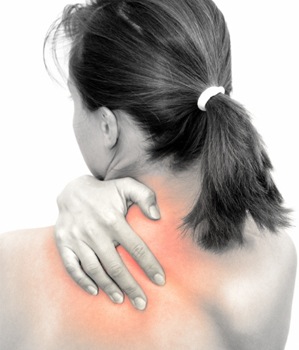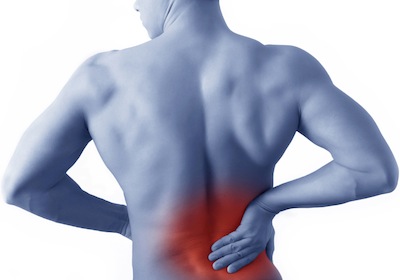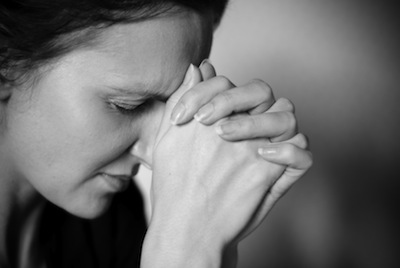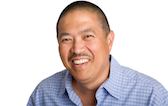Medical / Orthopedic / Specific Area Massage
 Medical/orthopedic/specific area massage benefits people who need massage in order to improve physical function in their daily activities. These types of massage require the most amount of skill and knowledge to master. In order to be most effective, advanced training and many hours of practice are necessary. In-depth knowledge of anatomy and physiology, advanced massage techniques, assessments skills, and soft tissue dysfunction and pathology are required skills. This type of work is currently the majority of my practice. The following list includes a the most common conditions that benefit from massage therapy.
Medical/orthopedic/specific area massage benefits people who need massage in order to improve physical function in their daily activities. These types of massage require the most amount of skill and knowledge to master. In order to be most effective, advanced training and many hours of practice are necessary. In-depth knowledge of anatomy and physiology, advanced massage techniques, assessments skills, and soft tissue dysfunction and pathology are required skills. This type of work is currently the majority of my practice. The following list includes a the most common conditions that benefit from massage therapy.
My work demands long hours seated at a desk. With no apparent trauma, I awoke one morning with excruciating neck pain. I'd received great massage from Mr. Tung in the past and recalled that he'd just finished a course in orthopedic massage. My treatment
was well underway with his thoughtful questions that allowed him to begin narrowing down
the scope, extent and nature of my problem. With massage therapy, exercises and the
information and gear I needed to continually co-manage my care, I was virtually pain free
within two weeks. I highly recommend Mr Tung for his expertise and professionalism
and will always seek his services it the context of comfort and well-being.
Rhonda
NECK PAIN / TIGHTNESS
 Neck and shoulder pain is the most common condition I see in my practice. The head is the size and weight (up to 10 lbs.) of a bowling ball. It rests on the nucleus of discs that have the diameter of a dime. With gravity constantly working on the head, the head goes forward. This puts strain on the muscles at the back of the neck and in the shoulders. These muscles, feeling a constant strain due to gravity, become sore, ache, and spasm. Applied specifically to these muscles, massage, stretching, muscle energy techniques, self care techniques, and corrective actions are highly effective in relieving pain, increasing range of motion, and maintaining the tissue in a healthier state. In more severe cases, assessment of ligament or nerve involvement or an appointment with a physician may be necessary.
Neck and shoulder pain is the most common condition I see in my practice. The head is the size and weight (up to 10 lbs.) of a bowling ball. It rests on the nucleus of discs that have the diameter of a dime. With gravity constantly working on the head, the head goes forward. This puts strain on the muscles at the back of the neck and in the shoulders. These muscles, feeling a constant strain due to gravity, become sore, ache, and spasm. Applied specifically to these muscles, massage, stretching, muscle energy techniques, self care techniques, and corrective actions are highly effective in relieving pain, increasing range of motion, and maintaining the tissue in a healthier state. In more severe cases, assessment of ligament or nerve involvement or an appointment with a physician may be necessary.
I have been a client of Richard Tung for three years. Previously, I had visited over 10 different therapeutic massage clinics but I have never found a better massage therapist than Richard. He has a comprehensive knowledge of anatomy that helps him zero in on your problem and give relief in a fraction of the time it would take other therapists. Richard also continues his education with frequent attendance at workshops that enlarge his therapeutic tool box and that has been critical in solving some of my back problems. He is friendly, helpful, and a pleasure to work with. I would recommend him to any one who wanted a massage.
Kevin
LOW BACK PAIN AND/OR TIGHTNESS
 Low back pain and/or tightness is the second most common condition that I see in my practice. The pelvic girdle consists of the bones that comprise the hips and pelvis. The muscles and ligaments that attach to the pelvic girdle have the most effect on low back pain and tightness. I usually work on these muscles starting with the muscles that attach directly to the lower back (lumbar area) and progressively work on the muscles that attach further away. If there is extreme tightness, my preferred method is to start with gentle muscle energy techniques, progress to massage, and finally stretch the appropriate muscles. Most of the ligaments in the low back area are accessible and are easily palpable. Tenderness upon palpation indicates ligament strain. Cross fiber friction to these ligaments can speed up their rate of healing. If there is nerve involvement, often times massage can loosen up muscles that press on the nerves, thereby diminishing or alleviating the pain.
Low back pain and/or tightness is the second most common condition that I see in my practice. The pelvic girdle consists of the bones that comprise the hips and pelvis. The muscles and ligaments that attach to the pelvic girdle have the most effect on low back pain and tightness. I usually work on these muscles starting with the muscles that attach directly to the lower back (lumbar area) and progressively work on the muscles that attach further away. If there is extreme tightness, my preferred method is to start with gentle muscle energy techniques, progress to massage, and finally stretch the appropriate muscles. Most of the ligaments in the low back area are accessible and are easily palpable. Tenderness upon palpation indicates ligament strain. Cross fiber friction to these ligaments can speed up their rate of healing. If there is nerve involvement, often times massage can loosen up muscles that press on the nerves, thereby diminishing or alleviating the pain.
I started seeing Richard around ten years ago when I developed severe chronic migraine. He is a true professional -- regularly inquiring about my status as well as keeping current on the latest methods and techniques in his field. I travel frequently and so have used other massage therapists in different locations, and I can honestly say that in my experience, Richard is the best.
Judy
HEADACHES
 I have treated numerous clients with headaches. I focus the massage on the neck, head, shoulder, and back areas. Often focusing on these areas and doing a full body massage has been most effective. Treatments alleviate or reduce the severity of the pain. In situations in which the client experiences chronic headaches, massage has also been helpful in reducing the frequency of headache occurrence.
I have treated numerous clients with headaches. I focus the massage on the neck, head, shoulder, and back areas. Often focusing on these areas and doing a full body massage has been most effective. Treatments alleviate or reduce the severity of the pain. In situations in which the client experiences chronic headaches, massage has also been helpful in reducing the frequency of headache occurrence.
I have been seeing Richard Tung for massage therapy twice a week for over three years. I have been receiving treatment for chronic muscle spasms. During the second year of treatment, I suffered from a stroke and the onset of Parkinson's disease. These additional ailments have caused me to be unable to work. Throughout this time , Richard's care has been a blessing. His massage has helped me in many ways; loosening the muscles, maintaining my flexibility and range of motion, and providing pain relief. Richard has also been very supportive and compassionate. He has looked up information regarding my various ailments and patiently shared that information with me. I have seen many massage therapists over the years and I can honestly say that Richard is the best.
Jim
CONDITIONS INVOLVING CHRONIC MUSCLES SPASM
 There are numerous ailments that can cause chronic muscle spasm. Some of the conditions that I have worked with include: chronic stress, heart disease, cancer, emphysema, Parkinson's disease, multiple sclerosis, fibromyalgia, lupus, arthritis, crohn's disease, gout, leyes syndrome and stroke. Focusing on specific problem areas in the context of a full body massage has been most effective in reducing muscle spasms, increasing range of motion, and increasing relaxation.
There are numerous ailments that can cause chronic muscle spasm. Some of the conditions that I have worked with include: chronic stress, heart disease, cancer, emphysema, Parkinson's disease, multiple sclerosis, fibromyalgia, lupus, arthritis, crohn's disease, gout, leyes syndrome and stroke. Focusing on specific problem areas in the context of a full body massage has been most effective in reducing muscle spasms, increasing range of motion, and increasing relaxation.
I have been a client of Richard Tung since December 2000. I drive the 40-45 minutes to his Wellesley office because of his massage talent and the immediate relief he provides. I suffer from a cervical spinal condition and was told by my doctors to ‘stay in shape and to seek massage therapy.’ Under Richard’s care over the past decade, I have avoided dangerous surgery because of his ability to offer direct relief at the sources of pain and to provide me with stretching exercises designed exclusively for me. Richard has the ability to alter his pressure touch levels based upon sensitivity. On some occasions, I have been unable to take heavy pressure, due to my nerve damage and muscle tension level. Richard’s knowledge (he remains up-to-date on the newest practices and techniques) and his ‘magic hands’, coupled with regular exercise, keep me mobile, pain-free and able to live my busy life.”
Jenn
SPINAL CONDITIONS
 I often see clients with spinal conditions after they have seen their medical doctor and received approval for massage therapy. Conditions in this region can be serious, and each condition has a different treatment protocol. Some common injury conditions that massage therapy can help include: lumbar facet syndrome, spondylolysis, spondylolisthesis, herniated nucleus pulposus, and spinal ligament sprain. Structural and postural deviations that can benefit from massage therapy include: Kyphosis, scoliosis, excess lumbar lordosis, and decreased lumbar lordosis.
I often see clients with spinal conditions after they have seen their medical doctor and received approval for massage therapy. Conditions in this region can be serious, and each condition has a different treatment protocol. Some common injury conditions that massage therapy can help include: lumbar facet syndrome, spondylolysis, spondylolisthesis, herniated nucleus pulposus, and spinal ligament sprain. Structural and postural deviations that can benefit from massage therapy include: Kyphosis, scoliosis, excess lumbar lordosis, and decreased lumbar lordosis.

